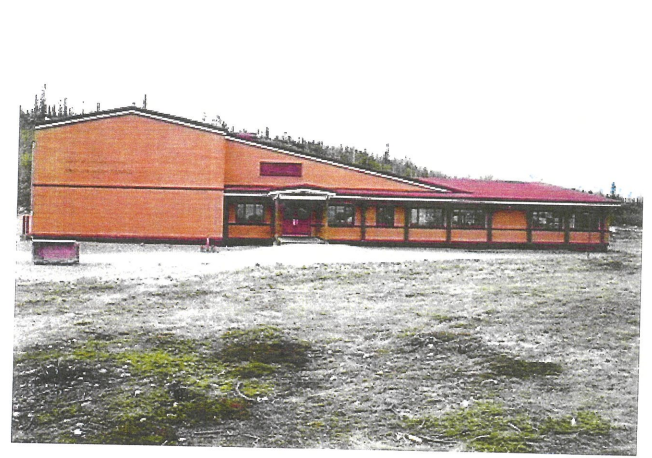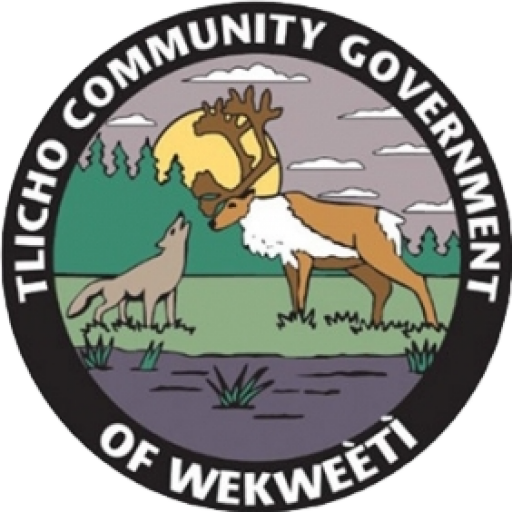History & Culture
-
Community Government Of Wekweètì > History & Culture
History of Wekweètì
Wekweètì is a relatively new Tłı̨chǫ community, however people have been living
in and travelling through this area for hundreds of years. Copper knife blades
recently found near the community airport give proof of that.
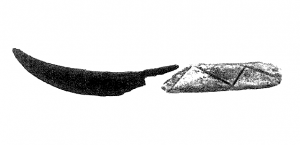
Photo of copper knife blade and handle made of carved antler. Credit: Prince of Wales Northern
Heritage Centre 992.6.7 & 993.76.9
Tłı̨chǫ people used to travel towards Snare Lake in the late summer each year. In the early days they would use birchbark canoes. Later, they would use canvas covered boats and travel with their families north, towards Snare Lake (at the edge of the barrens).
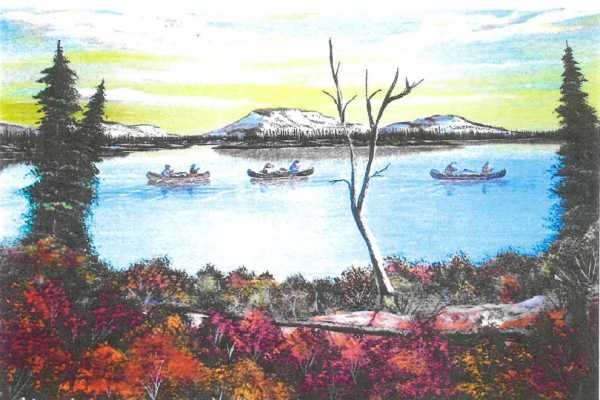
Rosa Pea’ a tells this story:
“I remember coming here from Rae at the end of the summer – in August. My family travelled together; my mother, father, 3 brothers and myself in a canvas boat with a small kicker (9.9 hp). I was old enough to make fire and cook bannock and fish for the family every day. We had our dogs with us (5 or 6 of them). Most of the time, the dogs ran along the shore beside us as we had a lot of gear in the boat. Things like caribou hides for sleeping, packs with clothes and blankets, cups, axes, guns.
“It could take us about a month to get to this area. Each night we set a net to get fish to feed the dogs. If there were ducks we would hunt them for food. We never wasted any parts of the fish or ducks because we had our family and our dogs to feed.
When we got to Snare Lake sometimes we camped across from where the community is now – on a point. Usually, we went way down Snare Lake towards Winter Lake to hunt caribou. We’d make lots of dry meat and make sure the dogs were fed well so they would be strong for the winter. The families would stay in that area for the winter, in tents. The men would go on to the Barren lands to trap Arctic Fox or hunt caribou. The women and children would stay back in camp.”
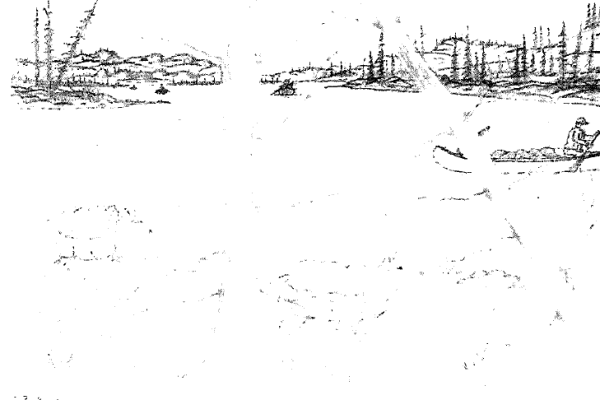
“In April we started to travel back towards Rae with our dogs. If the weather was too warm in the day time, we rested and travelled later in the day or night when the weather was cooler and the snow was harder. We ended up walking most of the way (behind the dogs and sleds) because the sleds were full of our gear. We walked all the time! By the time we got to Russell Lake area, we had been walking in water and snow that was up to our knees! We were only using moccasins -we didn’t have rubbers- but we were used to it and it didn’t bother us. We had to walk a lot because the dogs were pulling all our gear loaded on the sleds.” – Rosa Pea’a
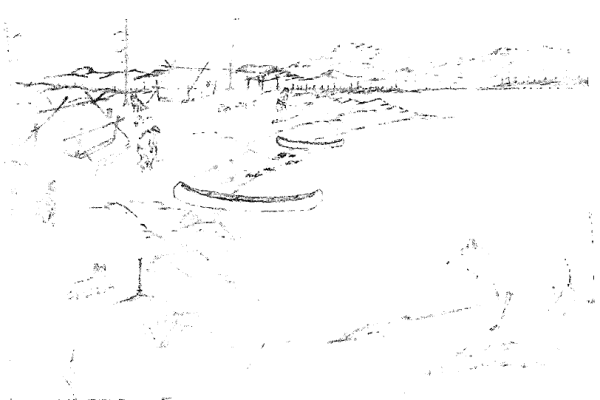
“We went to the Russell Lake area and then the families all went separate ways. The men trapped beaver and muskrats and the women dried the furs. The furs were sold in Rae and with the money, we got supplies that we needed (like flour, sugar, tea, tobacco, shells, gas etc). We stayed there for Treaty month (July) and then we headed back up towards the Snare Lake area in August.” – Rosa Pea’a
Sometime in the early 1900’s Pierre Wedzin built a small log cabin on the point across from where Wekweètì) is now. People can remember still seeing logs from the building and stones that were used in the stone fireplace. Around 1960 there were four small cabins built where Wekweètì) is now. They were very small cabins built with logs and a moss roof. The floor was just the ground and spruce boughs. These cabins were built by Victor Laboline, Moise Martin, Johnny Simpson, etc.
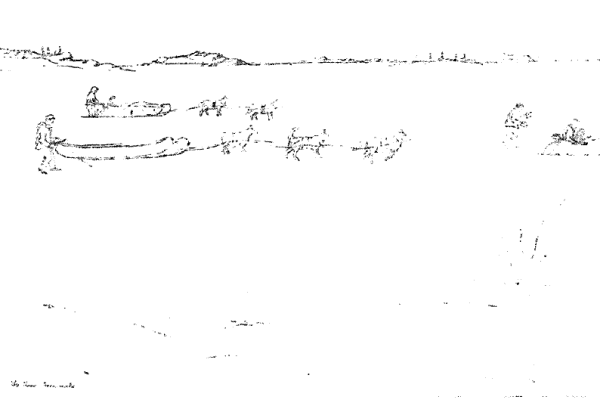
In 1963 Johnny Simpson and a larger group of these families received help from the government to build larger houses in the same spot. Johnny decided this would be a good place to build the houses. It was flat and it was near the narrow part of the lake where the fishing was good. Snare Lake began as an ‘outpost camp’ but soon grew to be a community with the hard work of the people and community leaders. The community name was changed to “Wekweètì” in 1999).
Ten houses were built by the families of Johnny Simpson, Johnny Eyakfwo, Andrew Lamouelle, Victor Laboline, Jean Rabesca, Louise Whane, Alexis Arrowmaker, Moise Martin and Pierre Wedzin and Pierre Quitte. They were built in an open circle so that children could play in sight of the families, in the centre of the circle.
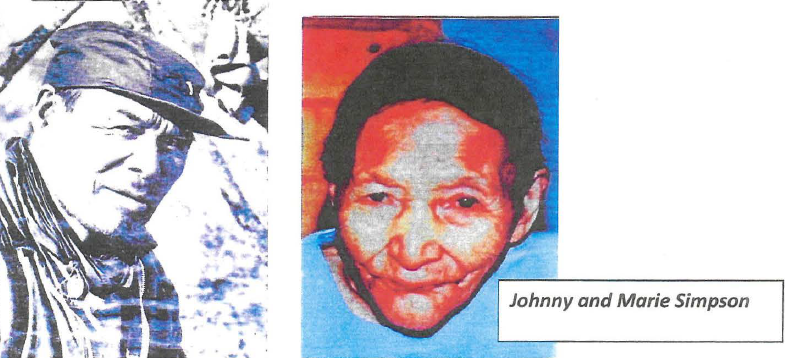
Noella Kodzin: “I can remember when the first two houses went up (Johnny Simpson’s and Victor Laboline’s houses). There were just 2 trails then – one trail to the houses and one trail to the ice hole where we got water!”
Rosa Pea’a – “I can remember staying here (where the community is) and there were lots of families, tents and dogs. We slept on spruce boughs in the tents and used candles or Coleman lanterns for light.”
Elizabeth Whane – “I remember when they built the cabins. We only had dogs then and in the spring time the men would get the logs and everyone would help pull them up the hill to the flat place where the houses were being built. They used ropes tied to the logs and the dogs pulled them up the hill. Everyone helped each other.”
In the 1960's and 1970's
Everyone used dog teams to get wood, go hunting, etc. (there were no skidoos in the community until 1977). The first skidoo in town was an Elan.
Light was candle or Coleman lantern. In 1978 the first generator was used in the community. There were quite a few extension cords leading to that house so that other people could plug a light bulb in to it!
People got their own water by bucket from the lake. (Therese Laboline)
Arnie Steinwand (from Rae) had a small plywood shack near the bottom of the hill (close to where Kodzin’s house is now). About once a month Arnie would fly to Snare Lake and open his store for the people. People would buy things like matches, tea, sugar, shells, tobacco using ‘credit’ from their Old Age Pension cheques, or by trading smoked caribou hides to Arnie. In the winter- all the canned goods would be frozen! There was a small wood stove in the middle of the cabin. People called Arnie “Jieko Kawiaa”.
Elizabeth Whane – “One year, when Louis (Whane) was the sub-Chief – it was really cold and there were no caribou. People were cold and very hungry. There was nothing to feed the dogs. Louis decided to ask Arnie Steinwand to bring his lane here to fly everyone to Rae that winter.”
The next store built, “Hozil’a Naedike” was started in 1981. It was built in one of the first log houses.
There were no phones at that time. Most houses had bush radios (SBX 11) so that they could talk to people in other communities or people who were in the bush. That’s how people called the doctor or nurse, ordered planes and groceries.
Schools
The first school was held in people’s houses. Teachers were brought here from Chief Jimmy Bruneau School in Rae-Edzoe. This was early in 1977.
Later in 1977, a canvas wall tent was used as the school. The students sat on log stumps and used a piece of plywood on their laps for their papers and books. The tent was heated by a wood stove and there was a blackboard and a Coleman lantern for light.
The younger students would come to school in the morning and the older students would come in the afternoons. People in the community took turns getting wood for the ‘school’. It was very exciting whenever a plane landed – all the students would rush out of the tent to see who was in the plane! In those days, there were not that many planes visiting Snare L. In 1978 the Community Hall was built. Half of it was used for the school and the other half was where the teacher lived. Later- a house was built for the teacher and both halves of the building were used for students. Next a log school was designed by Gino Pin in 1988. Unfortunately it burned down
in 1995
The Archade building was used as a school for half a year and then the present building was built for the school.
When James Wah-shee was Minister of MACA in 1980 he started to treat Snare Lake as a settlement rather than an outpost camp. Bob Richardson was an office with MACA along with John Ivy and began to work with the people of Snare Lake to form their own council with a chief and sub-chief.
